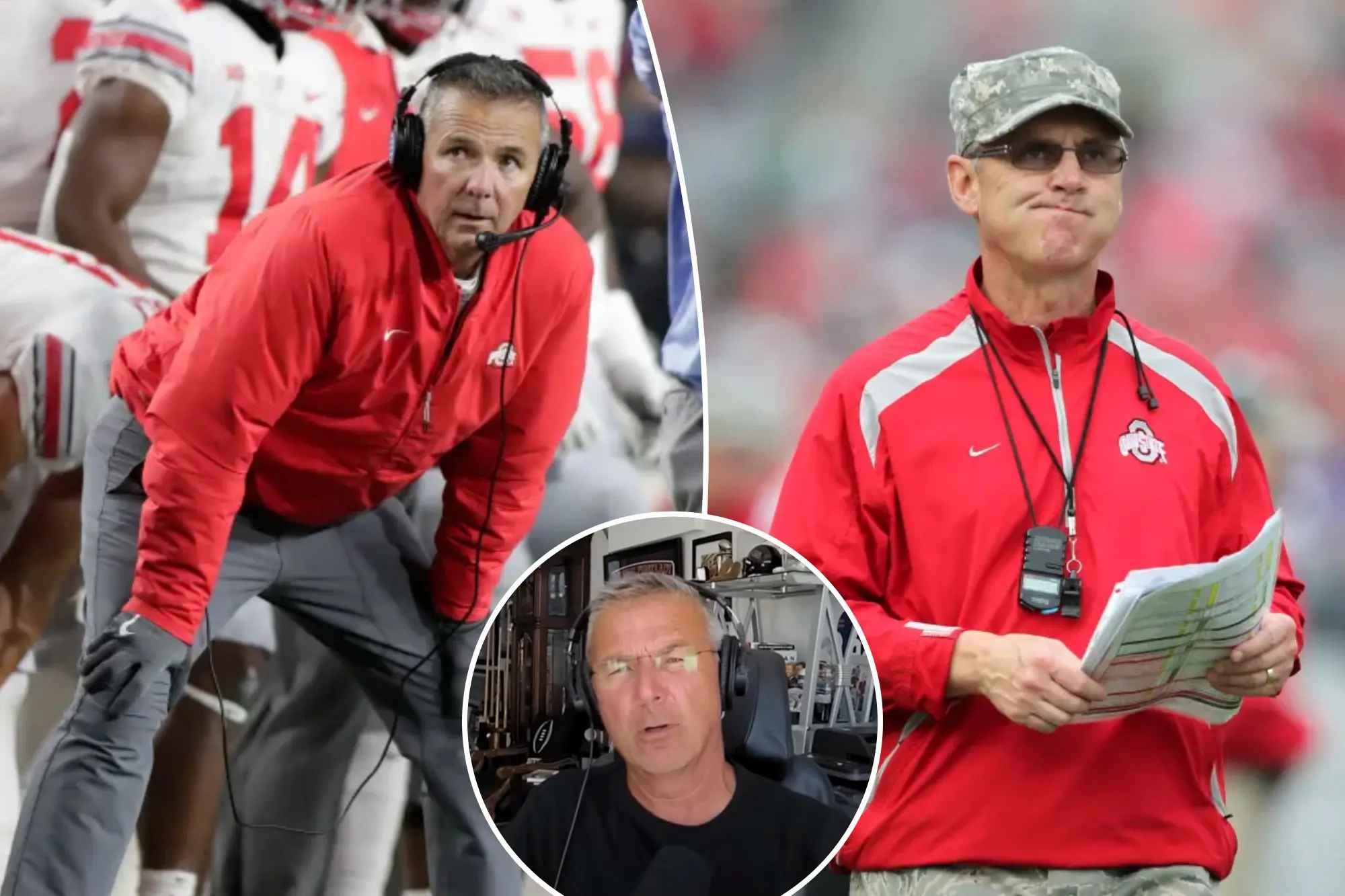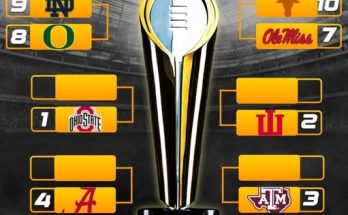Urban Meyer, one of college football’s most accomplished and sometimes controversial coaches, remains deeply resentful about how the NCAA and Sports Illustrated handled the case of Jim Tressel, the former Ohio State head coach. Even years after the scandal that rocked the Buckeyes’ program, Meyer’s grudge has not faded. His feelings are rooted in what he perceives as unfair treatment of Tressel, a coach Meyer admired and respected, and a broader frustration with the inconsistencies and politics that too often dominate college football governance and media narratives.
Jim Tressel’s tenure at Ohio State was marked by extraordinary success. Taking over in 2001, he quickly turned the program into a national powerhouse, winning a national championship in 2002 and consistently competing at the highest level. His coaching style—methodical, disciplined, and focused on character—earned him wide acclaim. Players, fans, and peers regarded Tressel as a model college football coach, someone who balanced winning with integrity. Yet, his career unraveled amid controversy that many believed was mishandled by both the NCAA and the media.
The scandal erupted in late 2010 when it came to light that several Ohio State players had received improper benefits, specifically discounted or free tattoos, in violation of NCAA rules. The crux of the controversy was that Tressel had allegedly known about these infractions for several months before reporting them. This omission led to accusations of a cover-up, which ultimately forced Tressel to resign as head coach. Ohio State was handed multiple penalties by the NCAA, including scholarship reductions and a postseason ban. The fallout was swift and severe, shaking the foundation of the Buckeyes’ football program.
Meyer’s grudge stems from the perception that the punishment meted out to Tressel was disproportionate and that the narrative spun by both the NCAA and Sports Illustrated unfairly vilified Tressel’s legacy. For Meyer, who succeeded Tressel at Ohio State, the episode remains a stain on the integrity of the sport’s governing bodies and media. In private conversations and public remarks, Meyer has expressed his belief that Tressel was treated as a scapegoat, bearing the brunt of punishments designed to send a message rather than administer fair justice.
One of Meyer’s primary frustrations concerns the NCAA’s enforcement process. He has long criticized the NCAA for its inconsistent application of rules and its seemingly arbitrary punishments that often fail to consider the nuances of each situation. In Tressel’s case, Meyer argues that the infractions were relatively minor—players receiving discounted tattoos rather than massive financial inducements—and that the coach’s delay in reporting, while problematic, did not warrant such a harsh penalty. Meyer sees this as symptomatic of the NCAA’s broader dysfunction, where enforcement is more about protecting the institution’s image than about ensuring fairness.
Sports Illustrated’s coverage of the scandal further inflamed Meyer’s ire. The magazine published a series of articles that framed Tressel not just as a coach who broke rules, but as someone fundamentally dishonest and unethical. Meyer has voiced disapproval over what he views as sensationalized journalism that contributed to the downfall of a respected figure. The media, in his view, played a role in inflating the scandal, focusing on narrative drama rather than balanced reporting. This media treatment contrasted sharply with how other programs and coaches accused of NCAA violations were handled, adding to Meyer’s sense of injustice.
The timing of the scandal also plays into Meyer’s grudge. He became Ohio State’s head coach just a year after Tressel’s resignation, stepping into a program damaged by scandal and skepticism. Meyer had to rebuild the team’s reputation while navigating the lingering distrust left by the NCAA’s penalties and the public backlash. From Meyer’s perspective, the way Tressel was treated had ripple effects, complicating his own tenure and the program’s efforts to regain its footing. This personal connection to the aftermath reinforces Meyer’s bitterness.
Moreover, Meyer’s resentment is emblematic of a broader tension in college football—the ongoing struggle between coaches, administrators, the NCAA, and the media over control, narrative, and accountability. Coaches like Meyer feel trapped in a system that demands excellence but often punishes imperfection with severe, sometimes inconsistent consequences. The Tressel case is often cited by Meyer as a cautionary tale of how the system can unfairly single out individuals for systemic problems, especially when media outlets seize on stories that generate attention but may lack context.
Despite his grudge, Meyer has acknowledged the complexities of the situation. He has admitted that Tressel should have reported the violations sooner and that accountability is important. However, he consistently emphasizes that the scale of punishment did not fit the offense. This nuanced position highlights Meyer’s belief that integrity and fairness are not mutually exclusive, and that the NCAA and media should strive for balance rather than sensationalism or heavy-handed enforcement.
The legacy of the Tressel scandal continues to impact how Meyer views the college football landscape. It informs his skepticism about the NCAA’s ability to regulate the sport effectively and fairly, and it shapes his distrust of media narratives that prioritize scandal over substance. This lingering bitterness has colored his comments about other NCAA investigations and coach controversies throughout his career, reflecting a deep-seated belief that the system is flawed and that people like Tressel pay the price for larger institutional failings.
In the years since, Jim Tressel has somewhat rehabilitated his image, returning to coaching in a different capacity and engaging in charitable and educational initiatives. Yet, for Meyer, the damage done by the scandal and the surrounding media frenzy remains fresh. His respect for Tressel as a person and a coach makes the treatment he received all the more painful and frustrating. It serves as a reminder to Meyer of how easily a legacy can be tarnished by forces beyond a coach’s control, and how the pursuit of justice in college sports often becomes tangled with politics and perception.
Urban Meyer’s ongoing grudge over the NCAA and Sports Illustrated’s treatment of Jim Tressel is more than a personal vendetta; it is a reflection of deep concerns about fairness, leadership, and media responsibility in college football. His perspective invites a broader conversation about how the sport should handle infractions, the role of the media in shaping public opinion, and the need for systems that protect integrity without sacrificing empathy or justice. As college football continues to evolve, Meyer’s views serve as a cautionary voice reminding stakeholders that behind every headline and penalty is a human story deserving of fairness and respect.



